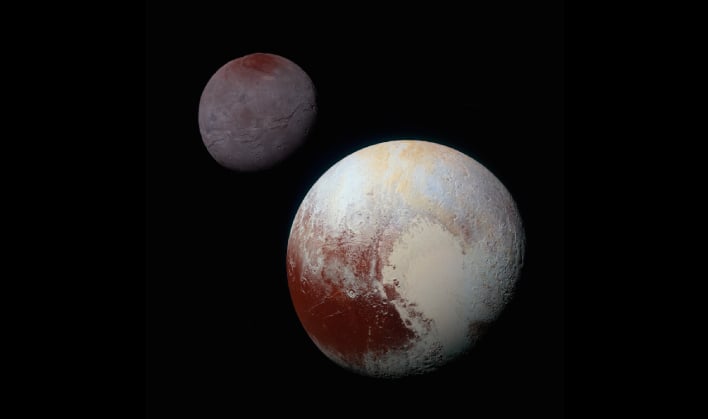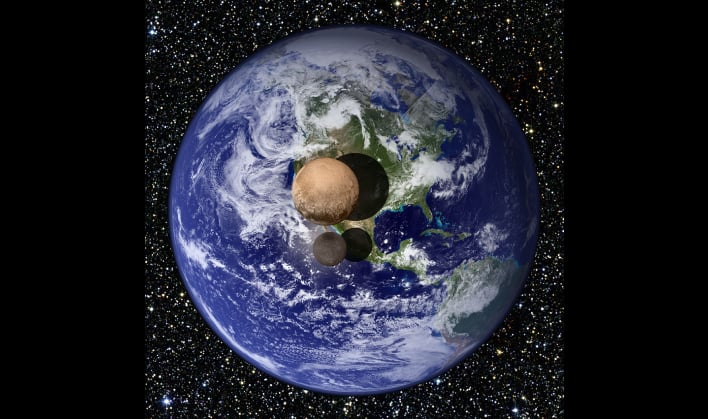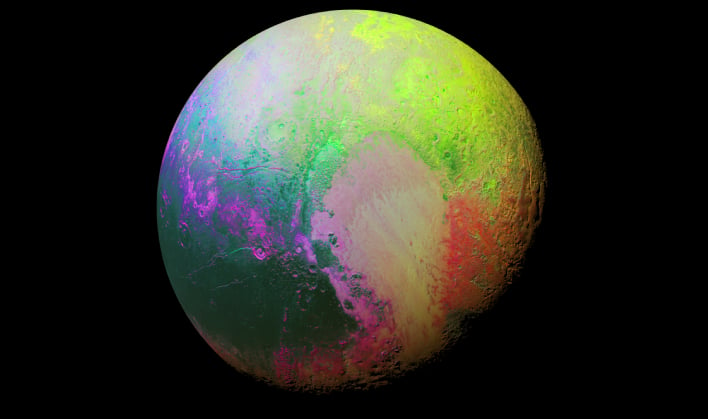It’s Pluto Day 2023: A Wonderful Look At This Complex World Of Ice Mountains

- Pluto is an icy dwarf planet that usually lies beyond the orbit of Neptune in the Kuiper Belt.
- The dwarf planet is smaller than Earth's Moon, with red snow-capped mountains as tall as the Rockies.
- NASA's New Horizons spacecraft made its historic flight through the Pluto system in 2015, providing the first close-up images of the planet and its moons.
In 1992 its classification was called into question when other objects of similar size were discovered in the Kuiper Belt, a ring of bodies that lies beyond Neptune's orbit. As of right now, Pluto remains the largest known world in the Kuiper Belt.
Pluto was officially downgraded to a dwarf planet by the International Astronomical Union on August 24, 2006, which is now known as Pluto Demoted Day.
About The Dwarf Planet Pluto
Pluto is approximately 1,400 miles (2,380km) wide. That is about half the width of the United States, or 2/3 the width of the Earth's moon. It orbits the Sun at a distance of around 3.6 billion miles (5.8 billion km), 40 times as far as Earth. A typical day on the dwarf planet lasts about 153 Earth hours, with a year lasting about 248 Earth years.The dwarf planet has a thin atmosphere of nitrogen, methane, and carbon monoxide. The atmosphere is almost entirely free of clouds, while scientists from NASA's New Horizons mission have identified some cloud candidates using images taken from the spacecraft's Long Range Reconnaissance Imager. The surface of Pluto is extremely cold, -378 to -396 degrees Fahrenheit (-228 to -238 degrees Celsius).
Pluto has 5 moons, with the largest being Charon. Charon is so immense that Pluto and Charon orbit each other like a double planet.
New Horizons
The New Horizons mission performed a flyby of Pluto in the summer of 2015. It revealed for the first time the potential complexity of dwarf planet systems in the Kuiper Belt. The spacecraft gathered over 50Gb of data while passing by Pluto, revealing it as a geologically and meteorologically active world.The spacecraft showed that Pluto's topography is very rugged, with some water-ice mountain blocks reaching 5km in height. The density of impact craters covering Pluto varies from heavily cratered terrains in Cthulu Regio that date from the earliest days of the Solar System, to Sputnik Plantia which does not show any impact craters at all.
New Horizons also provided data on Pluto's 5 moons: Charon (largest), Styx, Nix, Kerberos, and Hydra. The smaller 4 moons were discovered after the New Horizons mission started, and were imaged on a best-effort basis.
Celebrating Pluto Day
If you are looking for ways to celebrate Pluto Day, you can head over to NASA's Solar System Exploration website for some more in-depth information. For those who would like to educate their children on the dwarf planet, the website also has a link to a "For Kids: About Pluto".If you are fond of documentaries, there are some good ones you can search for, such as "The Year of Pluto", "Mission Pluto", and "Chasing Pluto". If nothing else, you can share your love of space and the dwarf planet by using #PlutoDay on your social media posts.



